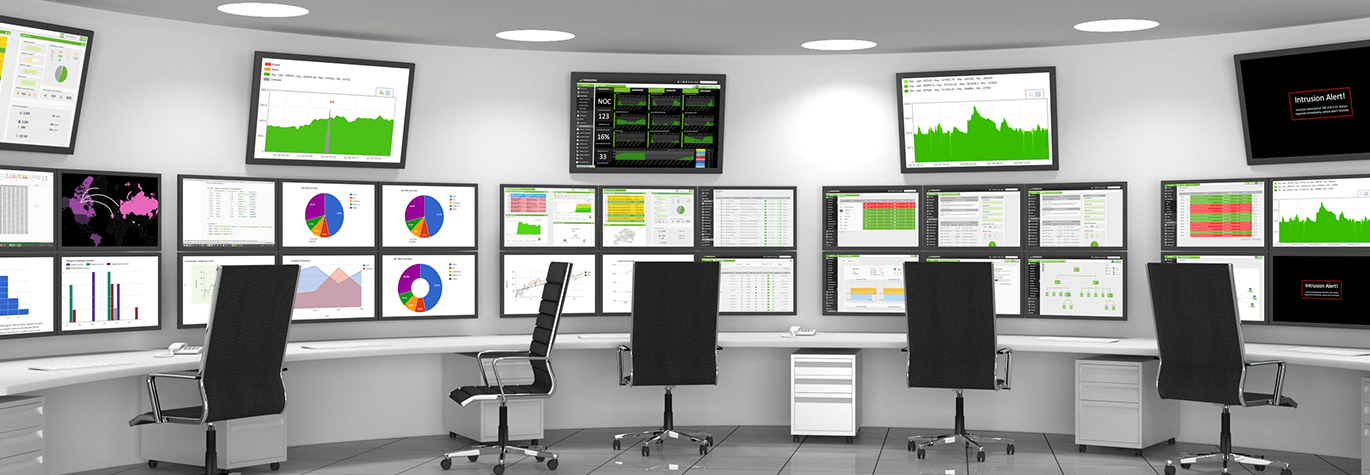The number of things connected to the internet these days is astounding. By 2021, more than 35 billion devices will be connected. As more employees work remotely, use personal devices (BYOD), and more devices access company networks, security risks increase. Networks continue to grow bigger and more complex, therefore, understanding the benefits of network monitoring is extremely important.
You need robust and reliable tools to monitor all of your IP assets to ensure you’re getting the performance you need and to optimize operations. The best network monitoring tools will provide a host of benefits.
Network Visibility
You need to be able to monitor every aspect of your network. That includes all of the devices attached to your network and the traffic that travels through the network. It’s the best way to keep an eye on the health of your network and identify lags in performance.
Just keep tracking of everything on your network can be a challenge. Automated network mapping tools, as part of your network monitoring, can provide a complete view of even the most complex ecosystems.
Maintaining Compliance
Organizations that need to maintain compliance with regulations need the appropriate network monitoring tools in place. PCI DSS, HIPAA, FISMA, SOX, and others require network monitoring as part of the internal control structure for compliance in addition to any external security controls that are already in place.
Preventing Downtime
Downtime is a productivity killer and it’s expensive. A recent survey reported that 40% of enterprise companies said an hour of downtime would cost between $1 million and $5 million.
Monitoring can help you prevent unexpected outages. One significant aspect of network monitoring solutions is to identify warning signs that might indicate a device failure or network problem. This helps you identify the problem and prevent downtime from occurring.
Not only does network monitoring help prevent downtime but performance monitoring allows IT teams to optimize performance for more efficient operations.
Finding and Fixing Problems Quickly
When there is a problem, network monitoring helps you isolate the issue more quickly. Whether it’s a traffic fluctuation, a configuration error, or something more serious, network maps can help you quickly find the origin of the problem. Network automation tools, as part of your monitoring solution, can fix many problems automatically.
Reducing your Mean Time to Repair (MTTR) reduces the impact of downtime or poor network performance and lets your IT team focus on other issues.
Uncovering Security Threats
Network monitoring is primarily used to monitor performance, but it can also help uncover security threats within your system. By continuously monitoring for unusual or suspicious activity, you may be able to detect even small threats before they become big ones. For example, malware or viruses may be undetectable at a glance, but your network monitoring solution can flag unusual activity, such as suspicious use of network resources.
You’ll also be able to proactively identify unauthorized access or security threats such as DDoS attacks or unauthorized downloads.
Monitoring Bandwidth Utilization
When your bandwidth gets congested, you have unhappy employees and customers. Monitoring bandwidth utilization lets you know when things are started to slow. When bandwidth usage gets close to critical levels, you will be alerted so that you can adjust your quality of service (QoS) protocols or take other actions to improve performance.
Capacity Planning
User needs are constantly evolving as well. This can make it difficult to predict how and where users will consume network resources in the future. As utilization increases, it’s essential to plan for additional infrastructure and capacity to meet this demand.
When you are actively tracking and monitoring performance and utilization, network monitoring software will help you see when utilization is spiking. By benchmarking current performance, you can more accurately anticipate future capacity and upgrade the network.
Historical data can also help make the case for future investments when it’s budget time. When you can produce evidence that the network’s slowing down or performance is lagging due to increase utilization, it’s a lot easier to convince executives that you need to upgrade systems.
Deploying New Technologies
Network monitoring is also important when it’s time to deploy new technologies. It can help determine if the network can handle additional resources and proactively detect potential performance issues. After deployment, you’ll be able to monitor the network to ensure performance doesn’t suffer.
Freeing Up IT Teams
There’s also an undervalued benefit of network monitoring tools. IT teams have a lot on their plates these days. The growth of networks and the complexity has created a significant burden on teams that are typically understaffed, yet expected to ensure perfect performance. The right network monitoring tools, such as WhatsUp Gold, can significantly reduce the burden.
IT teams regain control of their network without having to manually dig into performance, get proactive alerts when something needs attention, and reduce the amount of downtime. When a problem is detected, network monitoring solutions make it easier to identify, isolate, and repair the problem.
All of this frees up time for team members to focus on other projects that can drive topline growth. That can be invaluable.
Producing Return on Investment
Network monitoring also provides a measurable ROI. If you can save one hour of downtime a year, monitoring has more than paid for itself. Add in the reduction of support calls, the time it takes to fix problems, and maintaining the required levels of network performance for efficiency, and you can see how the ROI adds up quickly.
Choosing the Right Network Monitoring Solution
Choosing a network monitoring solution for your business is a big decision. Each business has unique needs, so you need to make the right decision for your organization. Download this free IT Monitoring Buyer’s Guide now to help you understand the benefits of network monitoring.
